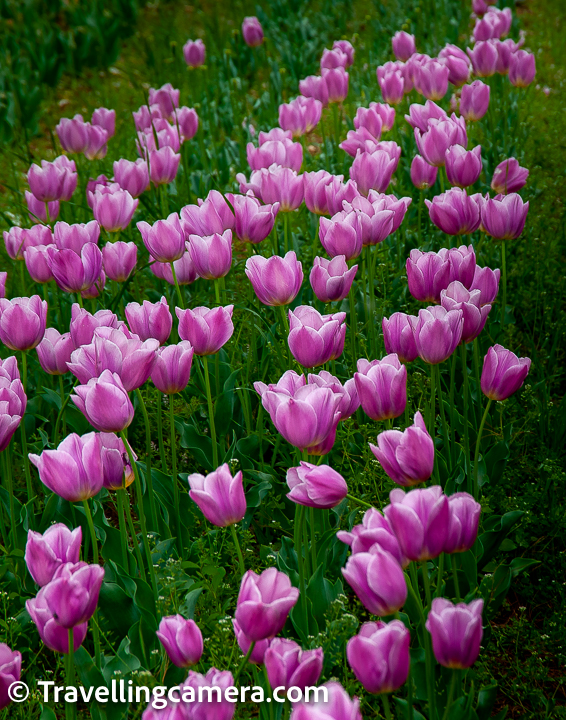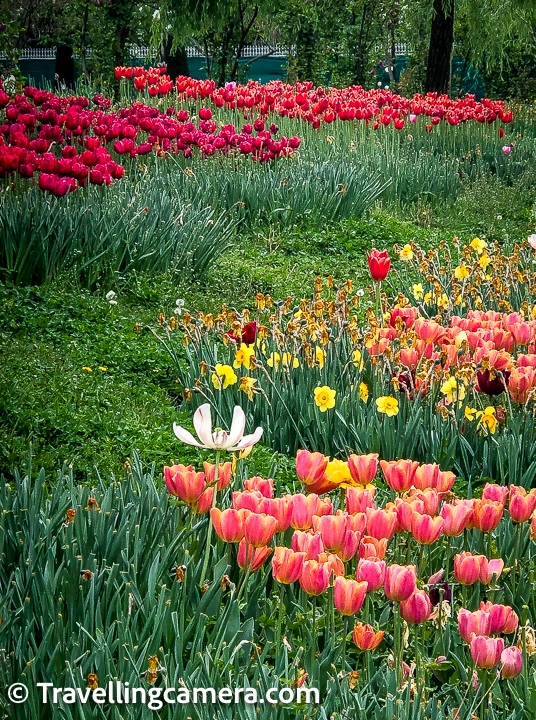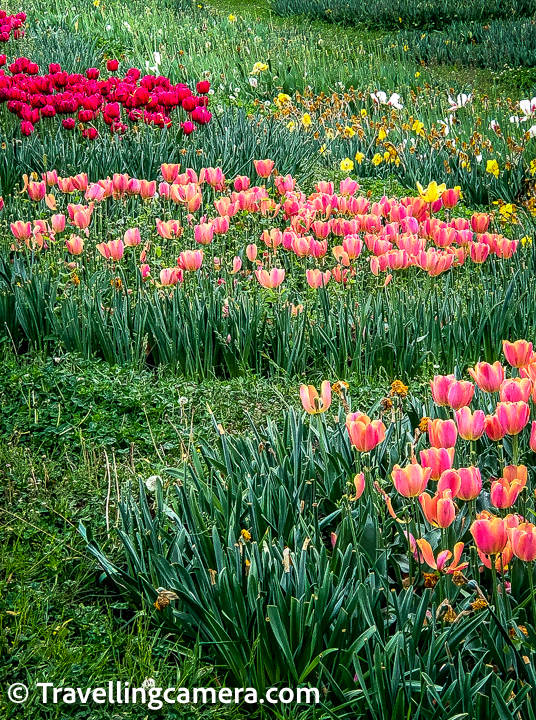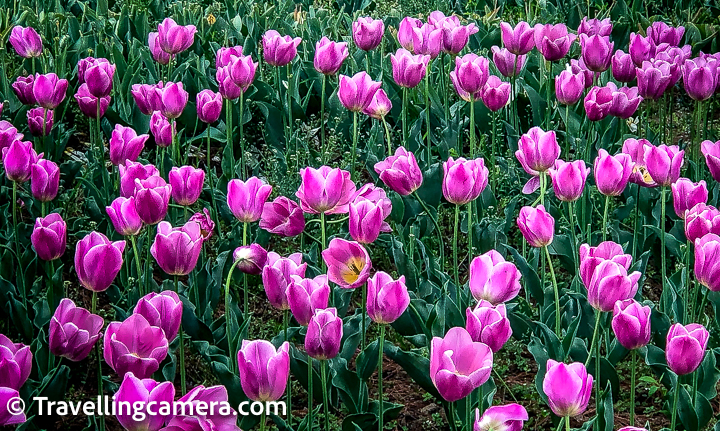Indians don't need to plan Holland's Keukenhof Gardens, as we have our own splendid Tulip Garden in Kashmir, surrounded by Grand Himalayan Mountain Ranges
To those of us who are old enough to recall the mesmerising backdrop of the legendary Bollywood duet "Dekha Ek Khwab", tulips would be familiar. That song was shot in Holland's Keukenhof Gardens, but now, it could very well have been shot in Srinagar in the Indira Gandhi Memorial Tulip Garden.
The Indira Gandhi Memorial Tulip Garden opened in 2007 with an aim to boost floriculture and Tourism in Kashmir Valley. The bulbs, about 1.5 million of them, were bought from Keukenhof Tulip Garden and planted on a hill overlooking the Dal Lake.
The Tulip Garden is now home to about 68 varieties of Tulips. Besides tulips, the garden also boasts of 46 varieties of other flowers such as ranunculus, hyacinths, and daffodils. When all the flowers are in bloom, it looks like a vividly painted canvas of bright colors.
The garden is located at the foot of Zabarwan range, and is Asia's largest tulip garden spread over 74 acres of land. It is built in the terraced format, with seven terraces that showcase tulips and other flowers of various shapes, colors, and sizes.
Related Blogpost - Kashmir || No Better Place to Experience the Haunting Beauty of Mountains (by Rida Irfan Ahmed)
In this garden, you will not only find the typical, single-colored tulips in bright red, yellow, pink, orange, and purple, you will also find the variegated variety. You will be interested in knowing that these variegated varieties weren't natural forms of tulips.
In fact they started in the 17th century in Holland when an infection of the tulip breaking virus created these patterns in tulips. These patterns came to be widely prized. Today, the naturally "broken" tulips do not exist anymore, but the closest to to those are known as "Rembrandts".
Related Blogpost - A short Pilgrimage Tour to Jammu and it's surrounding - by Shankar Rajaram
Tulips were used to grow wild in East and Central Asia and there are records of tulip cultivation in Constantinople as far back as 1055 AD. The west was mostly oblivious of these beautiful flowers till then. However by the 15th century, tulips were one of the most prized flowers.
Related Blogpost - Aparna Mohindra sharing Travel Photographs from the pristine valleys of Kashmir (India)
In the 16th century, the West finally discovered tulips when Western diplomats to the Ottoman court observed and reported on them. Europe adopted these flowers in a frenzy and this period of haste and eagerness to plant tulips in Europe is known as "Tulip Mania"
Now that the tulip garden in Srinagar is established and sees annual sprouting of bulbs in spring, the city has started celebrating the Tulip festival during the month that the tulips are in bloom. By the time we got there, the flowers had mostly wilted, but we got an idea of how splendid the garden would look when the tulips would be in full bloom. These flowers only stay for a few days every year, so if you want to see them in bloom, stay tuned on when they start blooming and then immediately fly over. Else you might miss them.











.jpg)
Comments